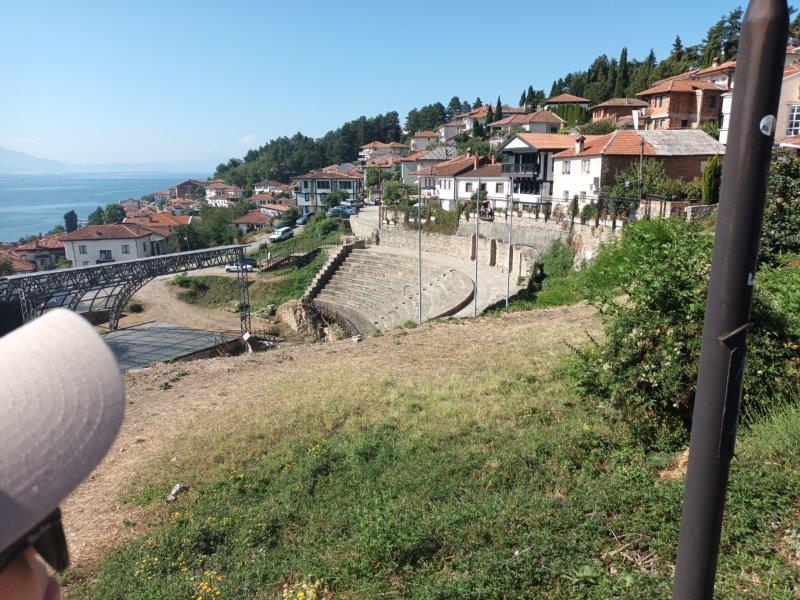From Sofia, we went to Ohrid, stopping in Skopje, the birthplace of Mother Teresa and where Alexander the Great is revered—to this day.
The road to Skopje
The toilet facilities were rather awful on the way to Skopje. Here we have Dedrie seeking out a suitable place behind a service station.

Skopje City
A city of statues.
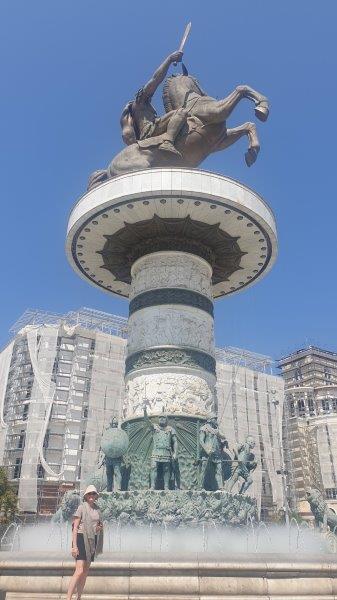
Alexander the Great was an ancient Macedonian ruler and one of history’s greatest military minds who, as King of Macedonia and Persia, established the largest empire the ancient world had ever seen. By turns charismatic and ruthless, brilliant and power hungry, diplomatic and bloodthirsty, Alexander inspired such loyalty in his men they’d follow him anywhere and, if necessary, die in the process. Though Alexander the Great died before realizing his dream of uniting a new realm, his influence on Greek and Asian culture was so profound that it inspired a new historical epoch—the Hellenistic Period.
Wikipedia
At age 12, Alexander showed impressive courage when he tamed the wild horse Bucephalus, an enormous stallion with a furious demeanor. The horse became his battle companion for most of Alexander’s life.
When Alexander was 13, Philip called on the great philosopher Aristotle to tutor his son. Aristotle sparked and fostered Alexander’s interest in literature, science, medicine and philosophy.
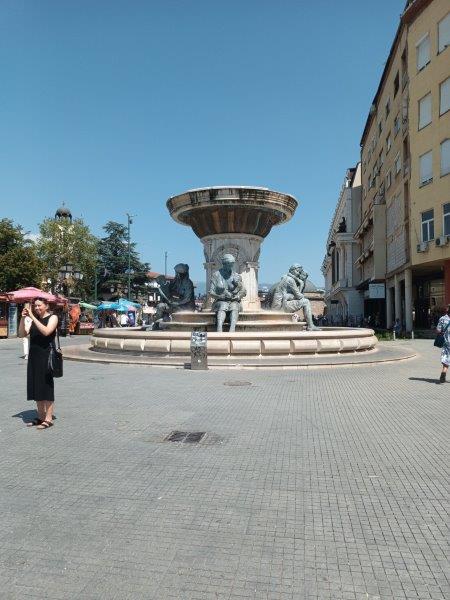
Some more—very contentious between Greece and Macedonia!
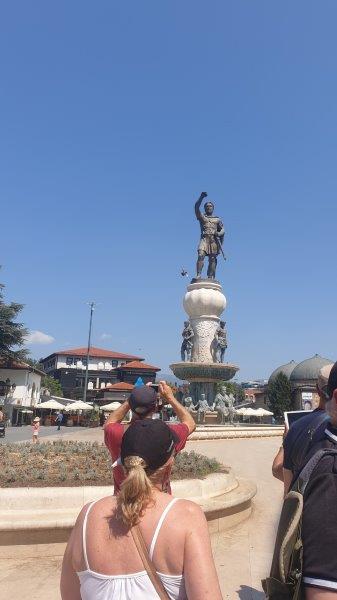
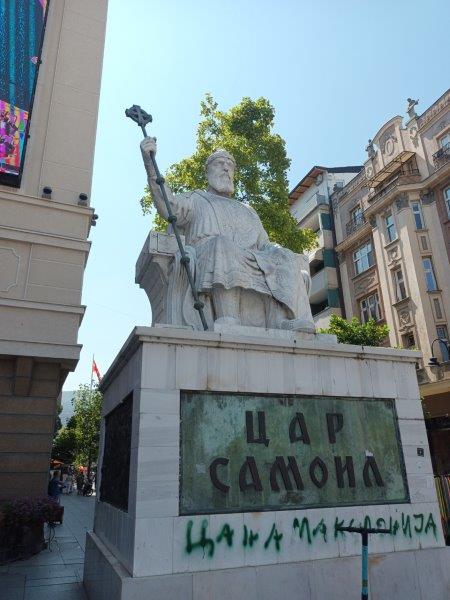
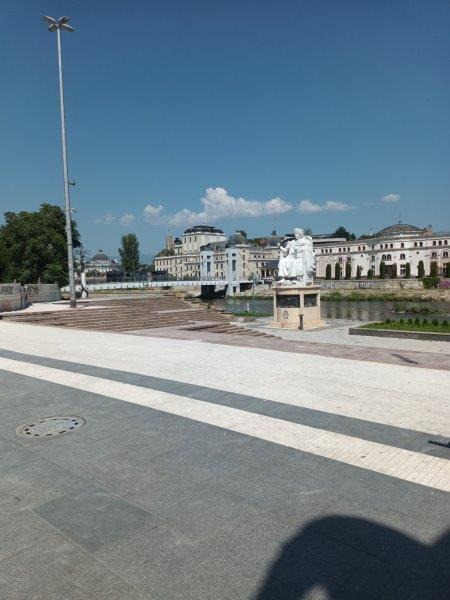
Lake Ohrid
We stayed for a day on the shores of Lake Ohrid, Europe’s oldest lake, having formed over three million years ago. It was beautiful. We were told we could swim in the clearest of clear water. We walked along the shore where holidaymakers lounged on every square centimetre of grass under the shady palm trees. It was so hot that we walked in the shade.
We looked and looked for a sandy beach—yes—we were told that the sand would be so fine that it would slide between our toes! We had learned our lesson at Cannikale, where skilful navigation was required to avoid the sharp pebbles that lay underneath the azure water of the Dardanelles. We were given a bum steer! Dedrie tried to get in, but the ‘sand’ was so coarse; it was rock-sized, actually. I briefly saw her head disappear for a moment and then re-emerge with a shout: ‘No way!’ We spent the rest of the afternoon on a sort of bean bag that the locals left on the lovely, shady lawn under palm trees.
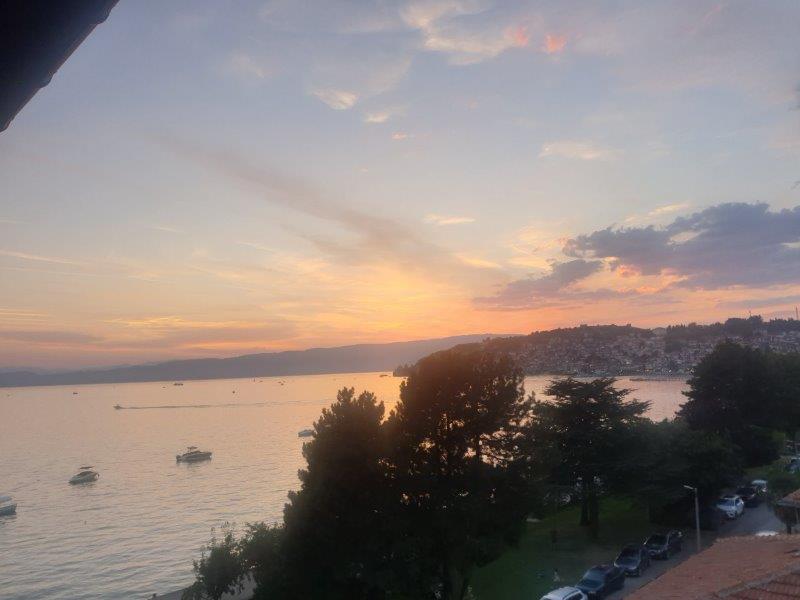
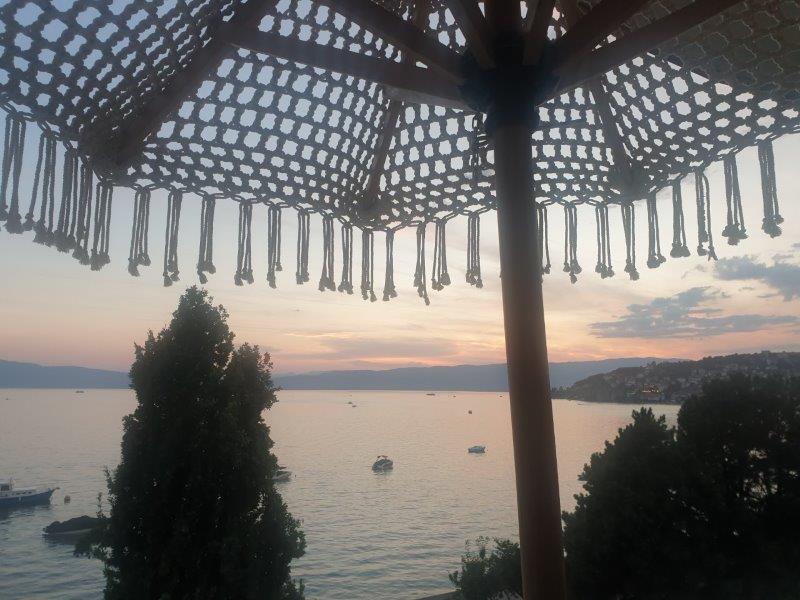

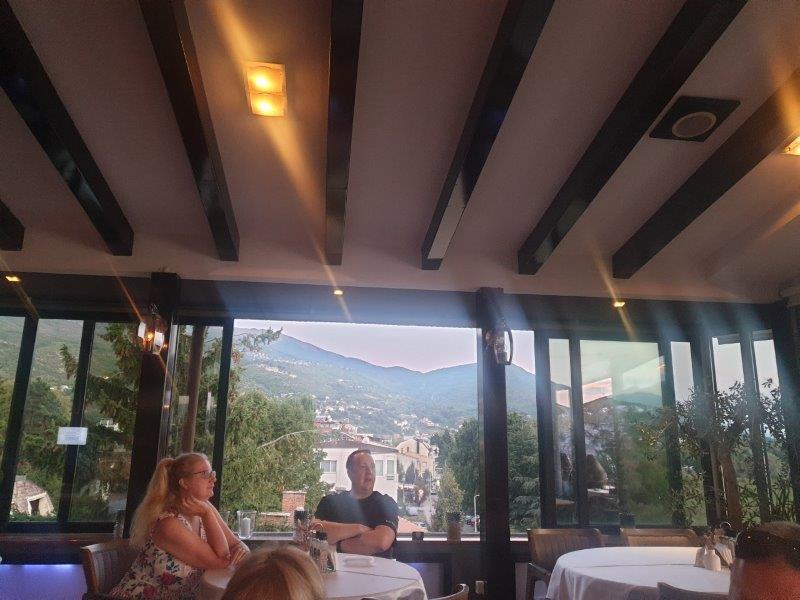
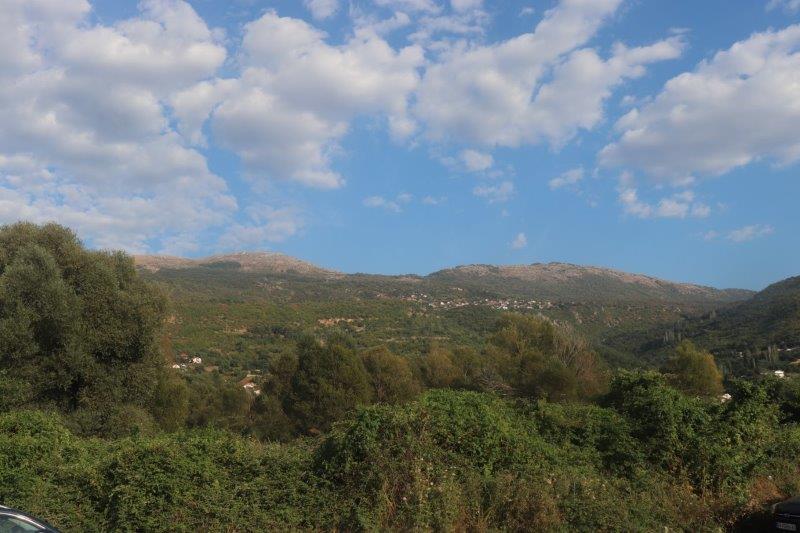


The cats were everywhere—looking for a bit of kebab crust, or better, a juicy bit of meat or fish. Many people fed them off the table. But those cats were not the type that would snuggle on your lap and purr. They looked you straight in the eye and gobbled anything up—growling, claws out, tackling the morsel with gusto.
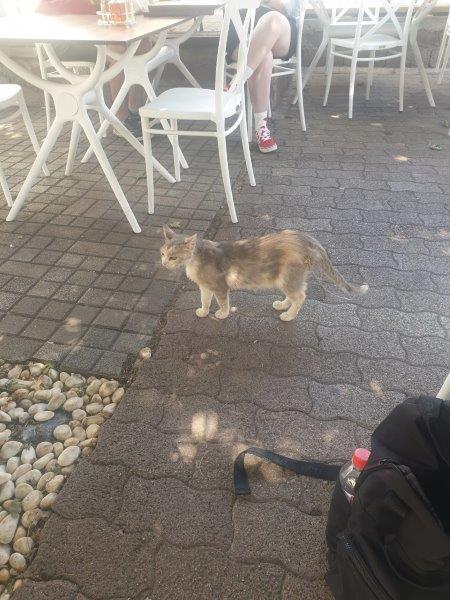
The City of Ohrid
Ohrid is a city in the southwestern part of Macedonia, on the northeast coast of Lake Ohrid, and its name is based on the city. Ohrid and Lake Ohrid are one of the main tourist destinations in Macedonia. Due to the large number of churches and monasteries, the city is known as the Balkan and European Jerusalem. Ohrid is also known as the “city of light”, a literal translation of its old name, Lychnidos. The Ohrid region is included in the UNESCO World Heritage. Modern Ohrid is the heir of the ancient Lychnidos.
The church of Saint John at Kaneo is one of Ohrid’s most iconic landmarks. Dating back to the 13th century, the church is perched on a cliff overlooking Lake Ohrid, offering great views and arguably the best sunset spot in the city! This church is actually one of the most photographed sites in Macedonia because of these views.
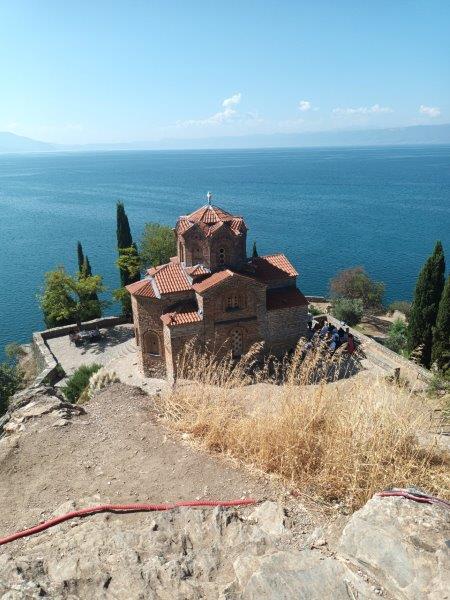
We decided to form part of the foreground.
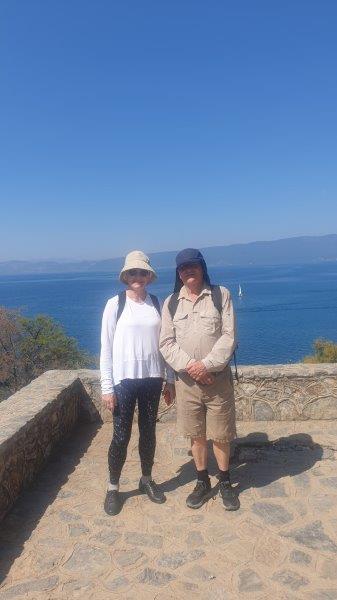
The Church of Saint Sophia is one of the most important monuments of North Macedonia, housing architecture and art from the Middle Ages. We were looking for shade and decided to walk through the cool forest, where we saw a tortoise with its baby.
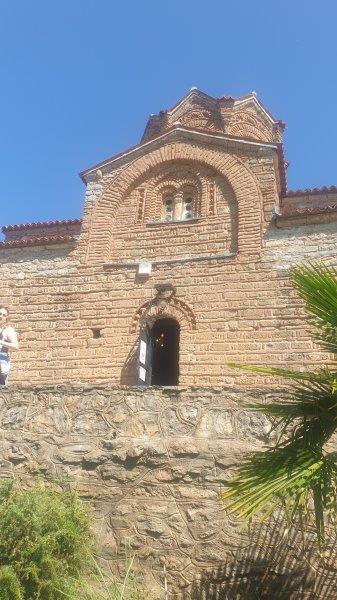
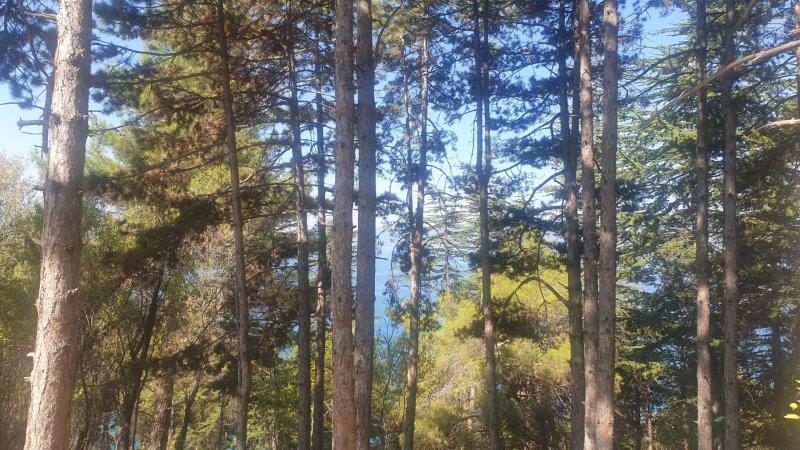

The Ancient Theatre of Ohrid is located in Ohrid, North Macedonia. It was built in 200 BC and is the only Hellenistic-type theatre in the country, as the other three Scupi, Stobi, and Heraklea Lynkestis are from Roman times. In classical antiquity, the Hellenistic period covers the time in Greek history after Classical Greece, between the death of Alexander the Great in 323 BC and the death of Cleopatra VII in 30 BC, which was followed by the ascendancy of the Roman Empire, as signified by the Battle of Actium in 31 BC
It is unclear how many people the original theatre used to seat, as only the lower section still exists. The open theatre has a perfect location: the two hills that surround it keep it protected from winds that could interfere with acoustics during performances. It was built at the end of the 3rd or the beginning of the 2nd century BC, during the late Hellenistic period.
During Roman times, the theatre in the city of Ohrid was also used for gladiator fights. However, since the theatre was also a site of executions of Christians by the Romans, it rapidly turned into a highly disliked site by the locals. In fact, as a result of this dislike, the theatre was abandoned and buried by the locals after the demise of the Roman Empire.
WIKIPEDIA
Since the late 1980s, the theatre has been a site of public performances, such as plays, concerts, operas, and ballet performances. Recently, high-profile cultural performances such as those by the Bolshoi and José Carreras take place each summer as part of the Ohrid Summer Festival.
